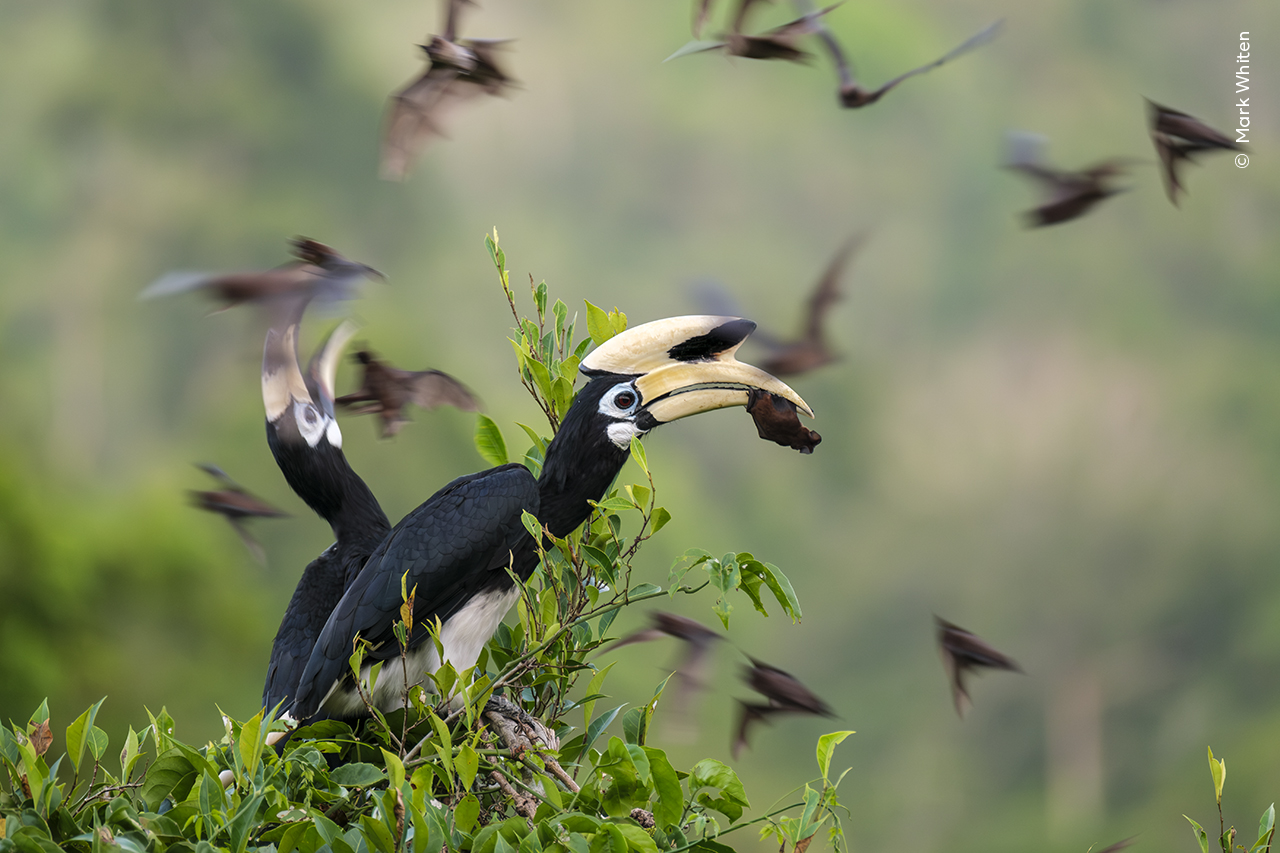Visit the exhibition
Discover the incredible stories of life on our planet through powerful photography and expert insight.
Tickets on sale now.

Mark Whiten (UK) watches as a pair of Asian pied hornbills snap their beaks at any bats flying within reach.
Mark had one night to photograph the hornbills feeding on the bats.
The bats could have headed in any direction, so he was lucky to find himself in the right spot for a spectacle that was all over in barely half an hour.
Asian pied hornbills mainly eat fruit, especially figs, but they can also eat insects, snails, lizards, eggs, fish, small birds and small mammals.
Mark watched this pair take up position near the cave exit.
Hornbills don’t have talons and are not as agile in the air as raptors. Instead, they use their binocular vision and precision beak to pluck bats mid-flight.
After sunset, up to 14,000 bats each minute emerge from the Gomantong caves in Malaysian Borneo to spend the night foraging for insects.
Their night-time hunting is vital to the balance of the local ecosystem. It helps control pests over neighbouring agricultural areas.
Discover the incredible stories of life on our planet through powerful photography and expert insight.
Tickets on sale now.

UK
From a young age, photography was always interesting to Mark. A significant portion of his childhood was spent in India and Thailand, during which he established a heartfelt tie to Asia. When the opportunity arose to relocate to Malaysia in 2018, he jumped at the chance. Not only was he back in a part of the world he truly loved but he also found himself enchanted by the country’s rich tropical biodiversity – a wildlife photographer’s dream.
Help us harness the power of photography to advance scientific knowledge, spread awareness of important issues and nurture a global love for nature.